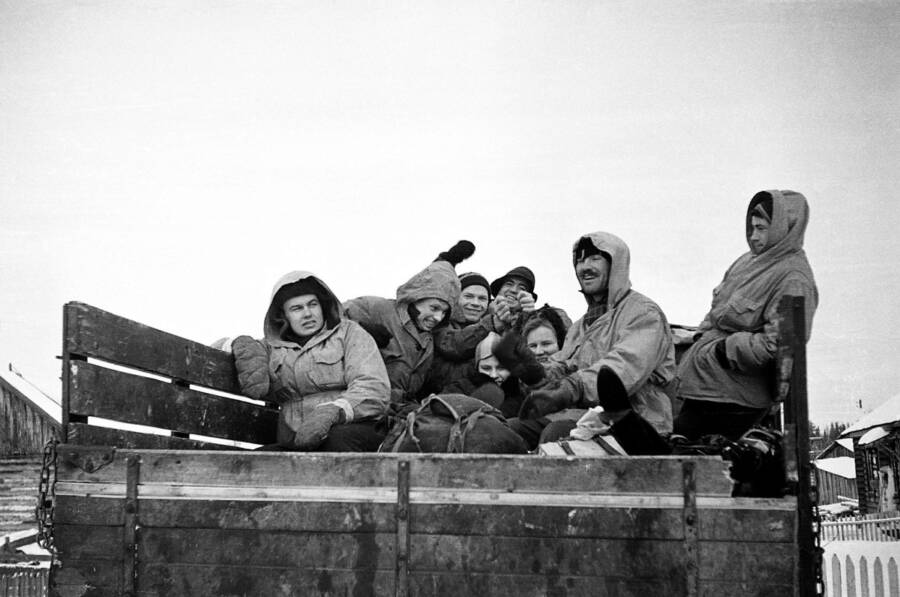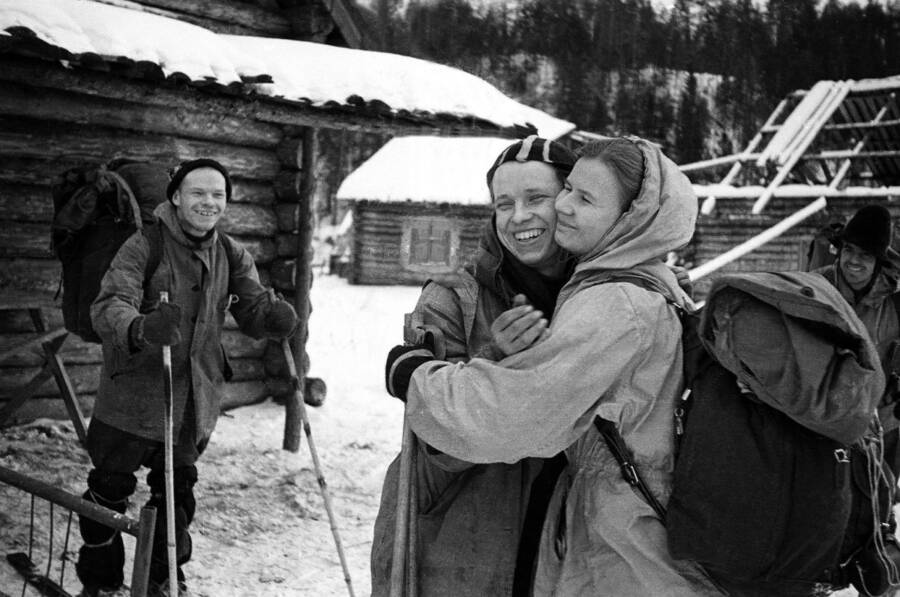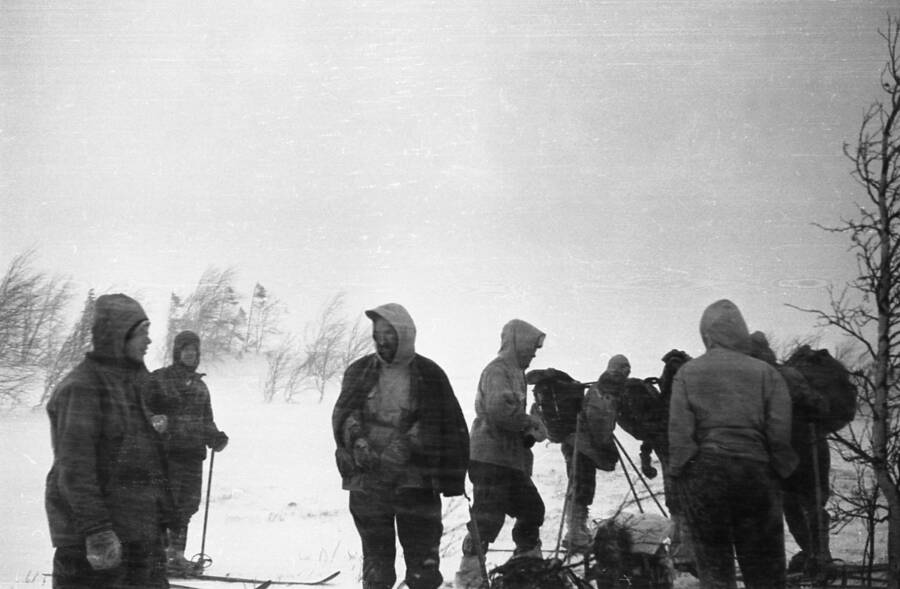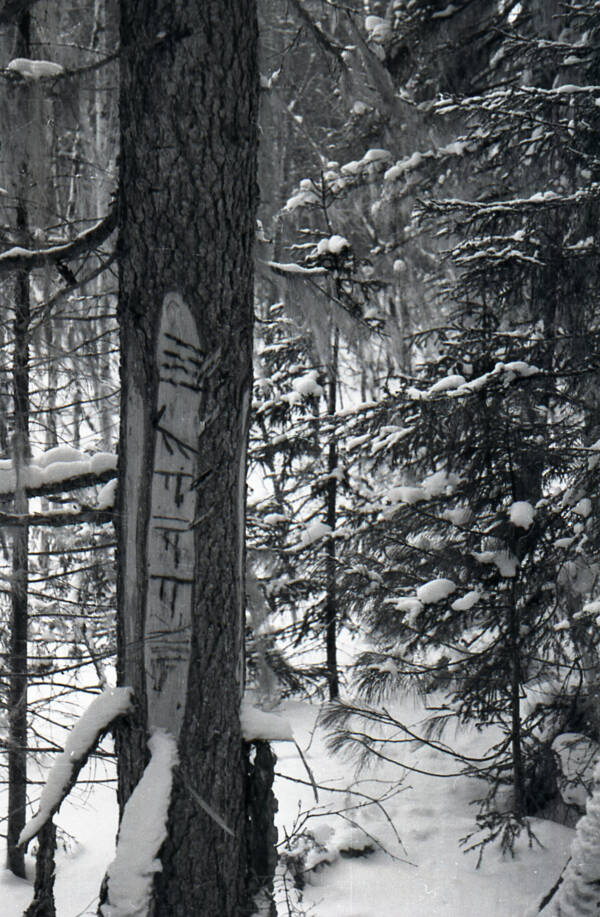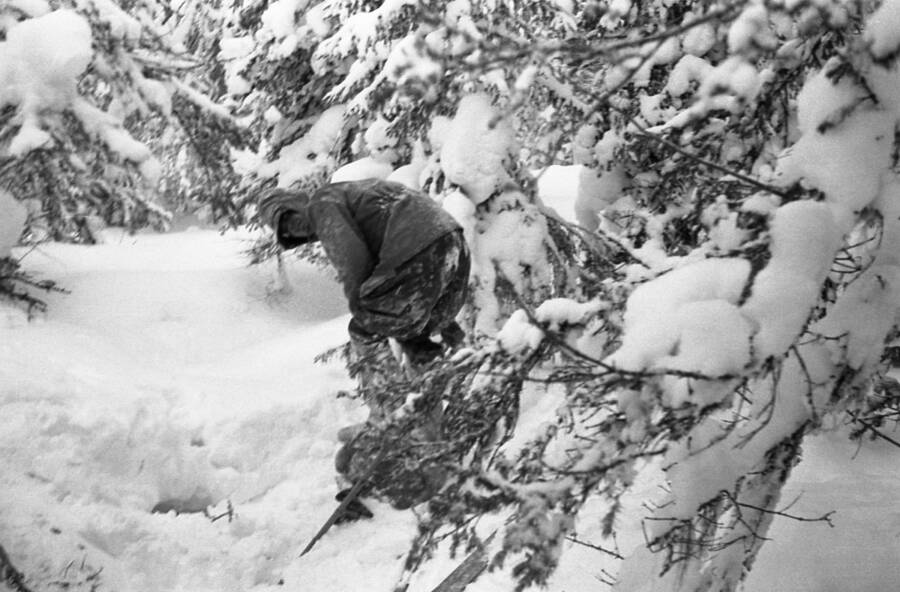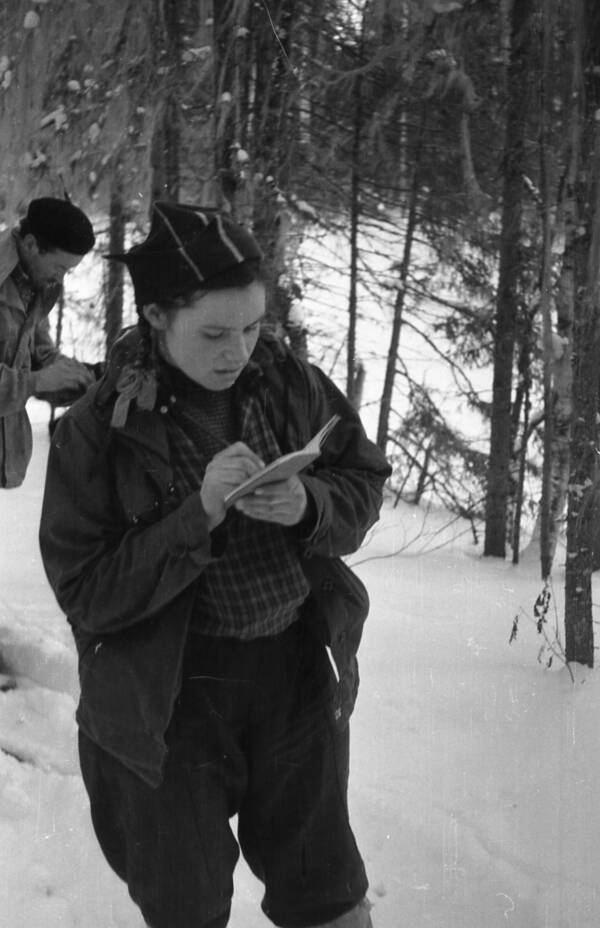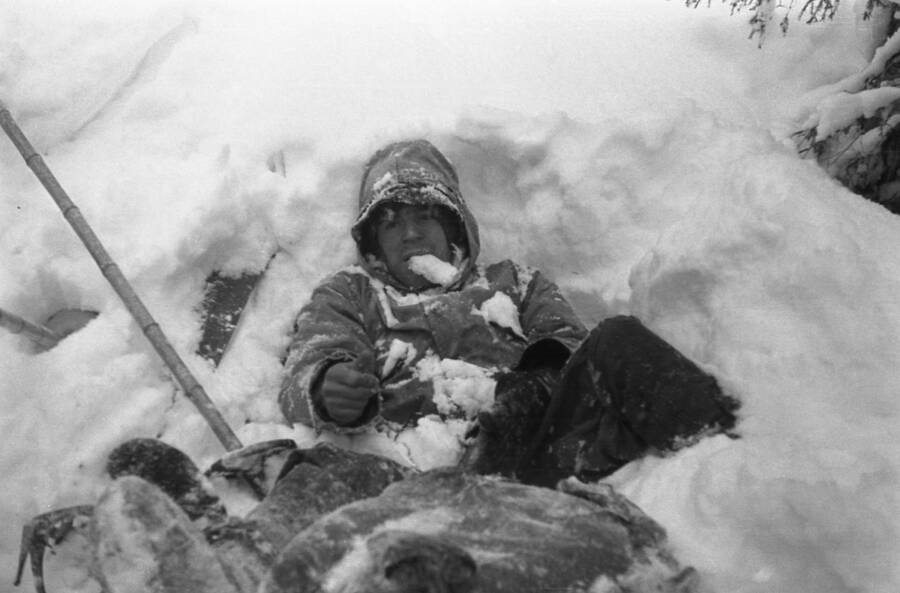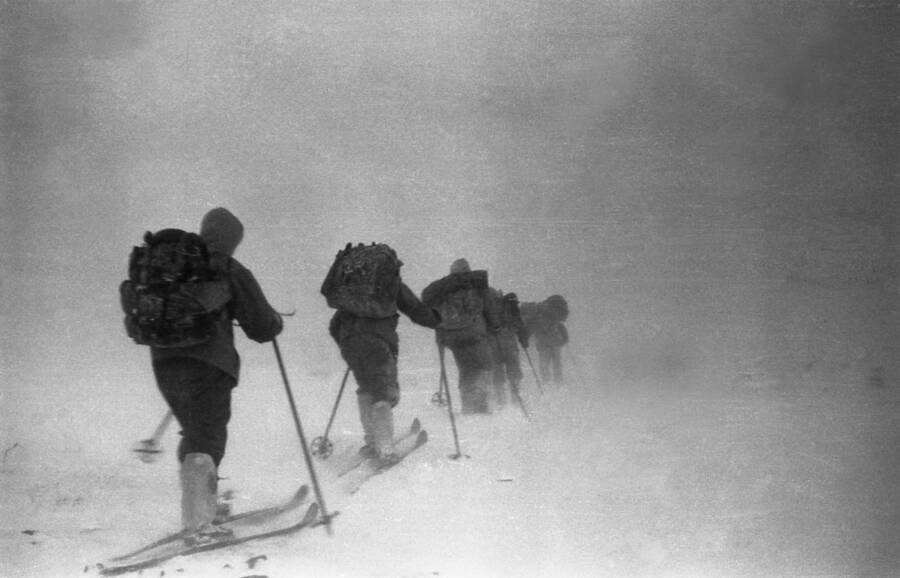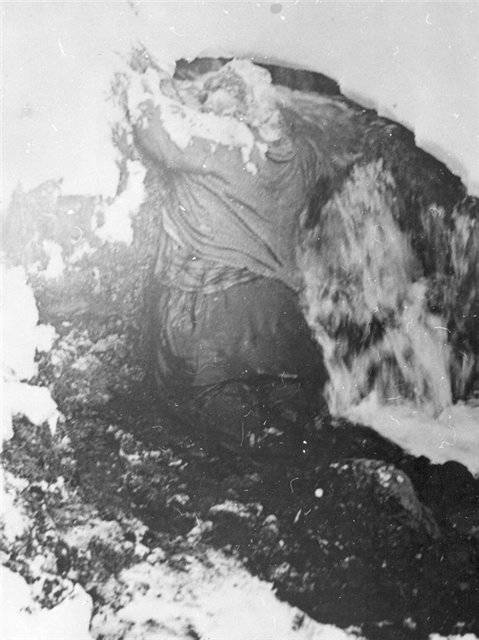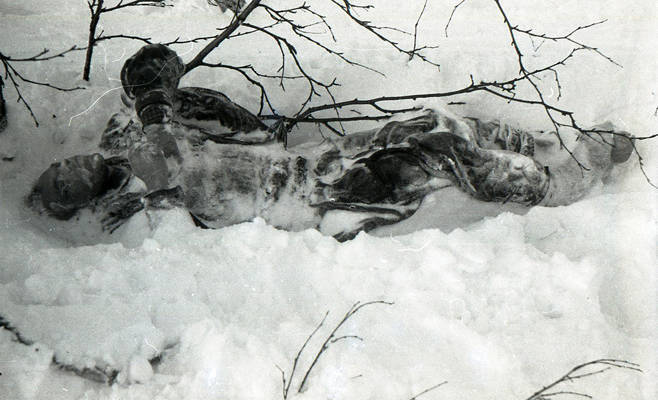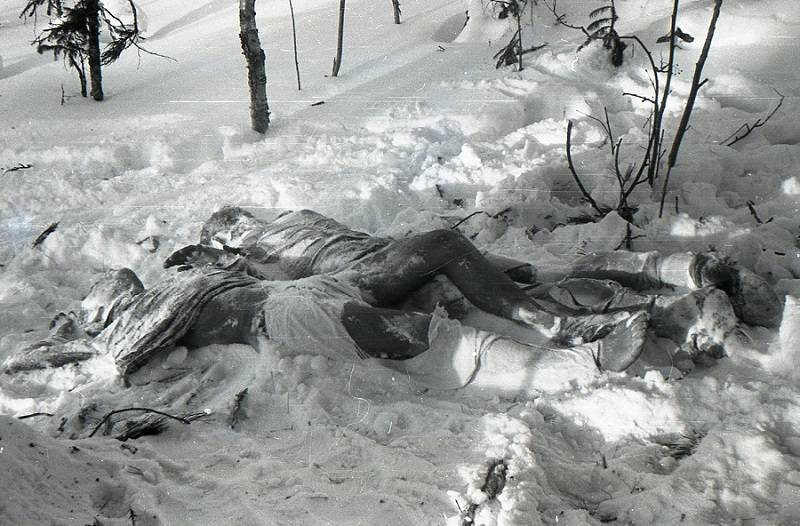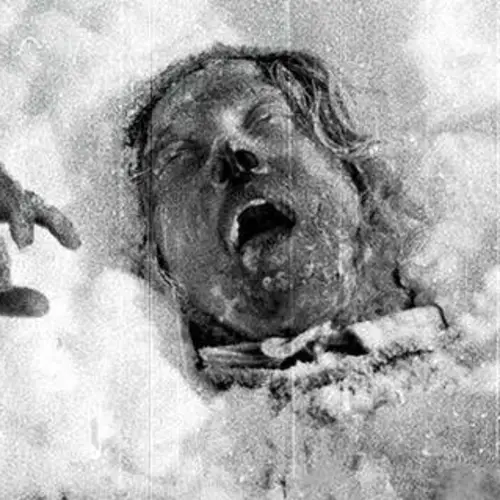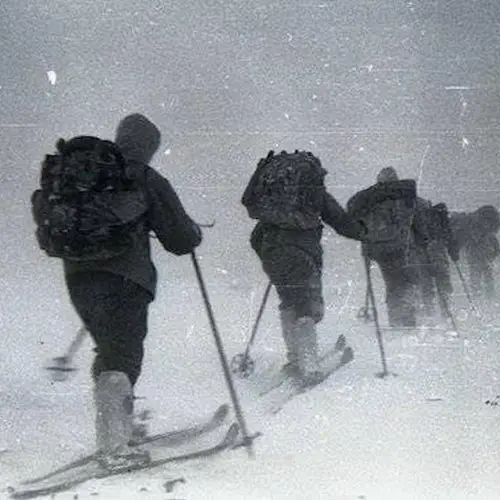These photos of the Dyatlov Pass Incident document the days leading up to the mysterious deaths of nine young hikers — and the investigation into their gruesome deaths.
In January 1959, a group of young hikers set off on a journey through the Ural Mountains in then-Soviet Russia.
About a month later, all of the hikers were discovered dead and scattered around their campsite in various states of undress. To this day, investigators are not sure how exactly all nine of them perished.
The case has since been called the Dyatlov Pass Incident.
Among the bizarre clues found around their bodies and their campsite, however, were four cameras. These photos of the Dyatlov Pass Incident were developed and used to piece together the events leading up to that fateful night.
Nine Hikers Set Off For Mount Otorten
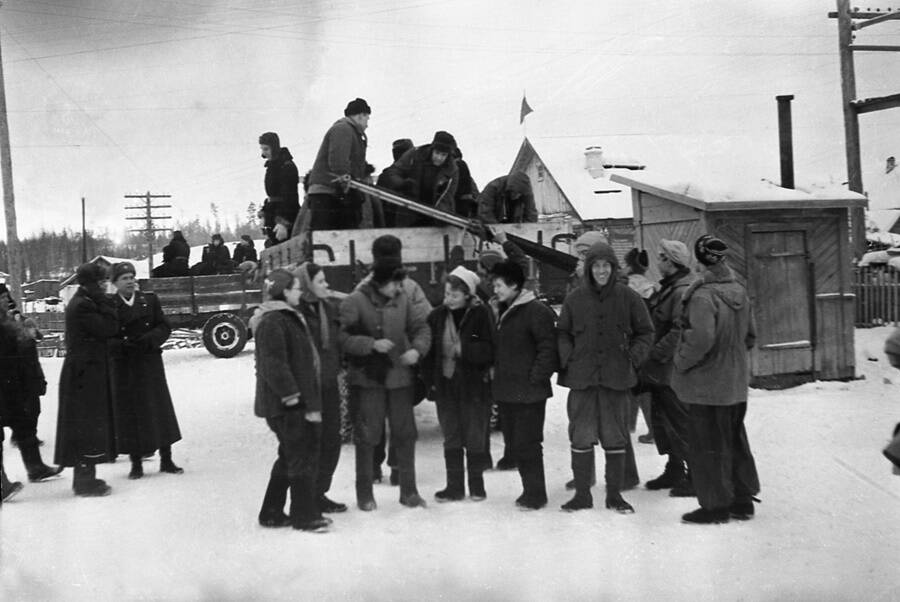
Teodora Hadjiyska/Dyatlov Pass websiteA group photo of the hikers from the Dyatlov Pass Incident with another group they encountered, the Blinovs, on their journey to Mount Otorten.
On Jan. 23, 1959, Igor Dyatlov led nine other hikers on a journey through the slopes of Kholat Syakhl in the Ural Mountains, which are known for their rough terrain and brutal conditions.
Most of the hikers were students and alumni from the Ural Polytechnical Institute (UPI) who had become friends. Their names were Yuri Doroshenko, Lyudmila Dubinina, Aleksander Kolevatov, Yuri Krivonischenko, Nikolay Thibeaux-Brignolle, Zinaida Kolmogorova, Semyon Zolotaryov, and Yuri Yudin. They were all experienced hikers and as a group had made similar hikes together before.
The trip kicked off on a good note according to Kolmogorova, a fifth-year radio engineering major at UPI, who had written as much in the group's joint journal. The group kept a handful of diaries throughout the trip in addition to a series of cameras. The mood on the train was reportedly cheery and photos of the hikers before the Dyatlov Pass Incident occurred proved as much.
"I wonder what awaits us in this trip? What will we encounter? The boys solemnly swore not to smoke the entire trip. I wonder how much will power they have to get by without cigarettes?"
On Jan. 26, 1959, the hikers hitched a three-hour ride on the back of a truck from Vizhay to the District 41 logging site. Yuri Yudin experienced sciatica at this point and chose to leave the group and head back home. That decision ended up saving his life.
The next day, the rest of the group continued their journey by foot up the mountains. According to the journal entries on February 1, the hikers made their way out late in the day. The route they had chosen had been remarkably difficult, even for them.
They walked two-and-a-half miles before pitching their tent on a slope of Kholat Syakhl, just 10 miles away from Mount Otorten where they were headed, according to their last journal entry and final photographs.
The Discovery Of Nine Bodies On The Dyatlov Pass
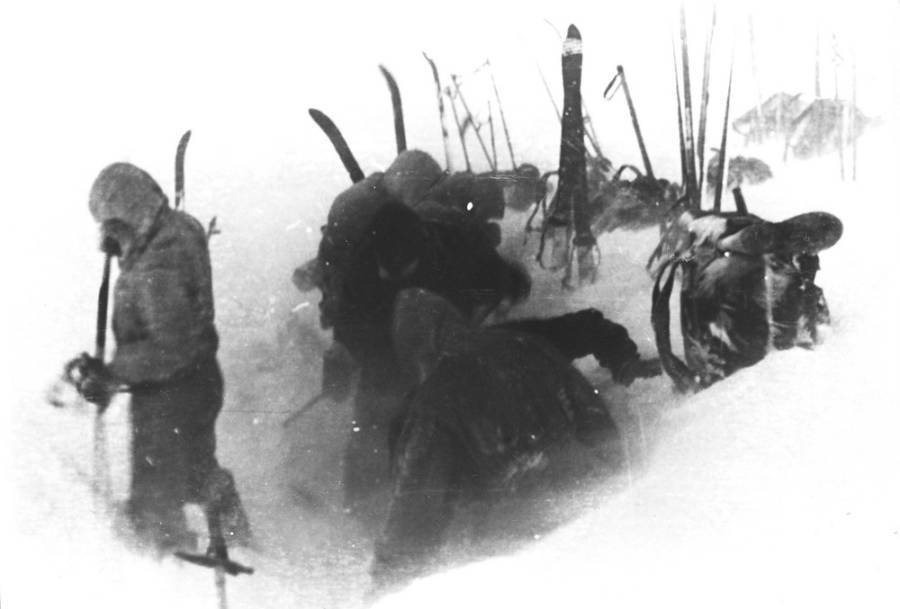
Russian National ArchivesOne of the last-known photos of the nine hikers alive, taken at the camp on Kholat Syakhl. The pass where they died was later named for their group leader, Igor Dyatlov.
When friends and family of the hikers had heard nothing from them by February 20, a volunteer search party was assembled that eventually discovered the hikers' abandoned campsite.
Here, the search party found the group's belongings, including the cameras which contained the final photos leading up to the incident. The tent itself was in shambles and there were no signs of any of the hikers. As the situation grew more serious, law enforcement got involved.
The tent appeared to have been cut open from the inside. Meanwhile, eight or nine sets of footprints, seemingly made by bare feet without any socks or shoes on, were also found around the campsite. The footprints led to the edge of the nearby woods about a mile away from the tent.
The first bodies of the group were found about a week after the tent was first discovered. They were Krivonischenko, 23, and Doroshenko, 21, who were both underneath a cedar tree. They were surrounded by remnants of a fire, not too far from the destroyed campsite. Doroshenko's body was "brown-purple" and he had gray foam coming from his right cheek and gray liquid coming from his mouth.
Then investigators then found the next three bodies, those belonging to Dyatlov, 23, Kolmogorova, 22, and Slobodin, 23. All five of the corpses were hardly clothed, despite temperatures between -13 to −22 degrees Fahrenheit. Some of the bodies were even found without shoes and wearing only underwear.
The rest of the group wasn't discovered until a couple of months later after much of the mountain's snow had thawed. Thibeaux-Brignolle, 23, Dubinina, 20, and Zolotaryov, 38, were found inside a ravine 187 feet deep in the woods. These three had the most clothing of all the hikers, even wearing each other's items. Investigators thought this meant they had gone back to their dead friends and taken their clothes for warmth. But why not just go back to the campsite?
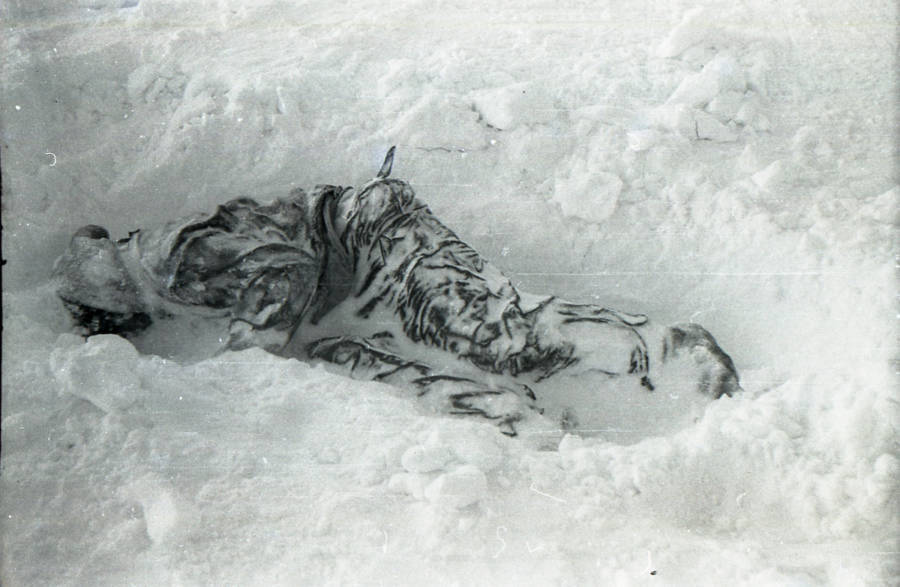
Russian National ArchivesZinaida Kolmogorova, found buried in the snow.
Indeed, the discovery of the bodies seemed to turn up more clues than it did answers. For one thing, there was the gruesome condition in which the corpses were found.
Thibeaux-Brignolle's had suffered significant skull damage moments before his death, and Dubinina and Zolotaryov had significant chest fractures that could only be caused by an immense force comparable to that of a car crash.
Dubinina's body was by far in the worst condition. She was missing her tongue, eyes, part of her lips, as well as some facial tissue. A fragment of her skull bone was also missing. These are just some of the unexplained discoveries from the investigation.
The scattered nature of the group members puzzled authorities and they thought this suggested that the hikers left their campsite in a hurry, leaving behind most of their belongings as a result. But if the campers had left their site in a hurry, unable even to dress properly, why had one of them thought to bring his camera along with him?
What The Photos Of The Dyatlov Pass Incident Show
Around the neck of Zolotoryov's corpse, investigators found a camera. Three other cameras had turned up back at the campsite together with six rolls of film. Unfortunately, Zolotoryov's film was too damaged when developed and had captured nothing but blurs.
Investigators also believed that there were likely more than four cameras but could not account for their disappearances. They reasoned only that the four cameras they found belonged to possibly Dyatlov, Zolotaryov, Krivonischenko, and Slobodin.
Luckily, authorities did manage to develop many of the photos of the Dyatlov Pass incident and used them to piece together the relationships of the hikers and to determine whether foul play was a possibility. They largely believed after observing the jovial photographs that the hikers were harmonious and likely not responsible for each others' deaths.
The first investigation was closed without a satisfying conclusion. Then, 60 years after the Dyatlov Pass Incident, the Russian government reopened the investigation in February 2019. Still, they did not find much.
Authorities determined the cause of the students' deaths to be hypothermia after some sort of unexplained natural force such as an avalanche forced the group out of their tent. But to many, this conclusion remains unsatisfying.
And so for now, the mystery of the Dyatlov Pass Incident continues.
Now that you've taken a look at these photos of the Dyatlov Pass Incident, learn about the disturbing story of 15-year-old Emanuela Orlandi, who disappeared inside the Vatican. Then, read about the unresolved true story behind the Atlanta Child Murders.
